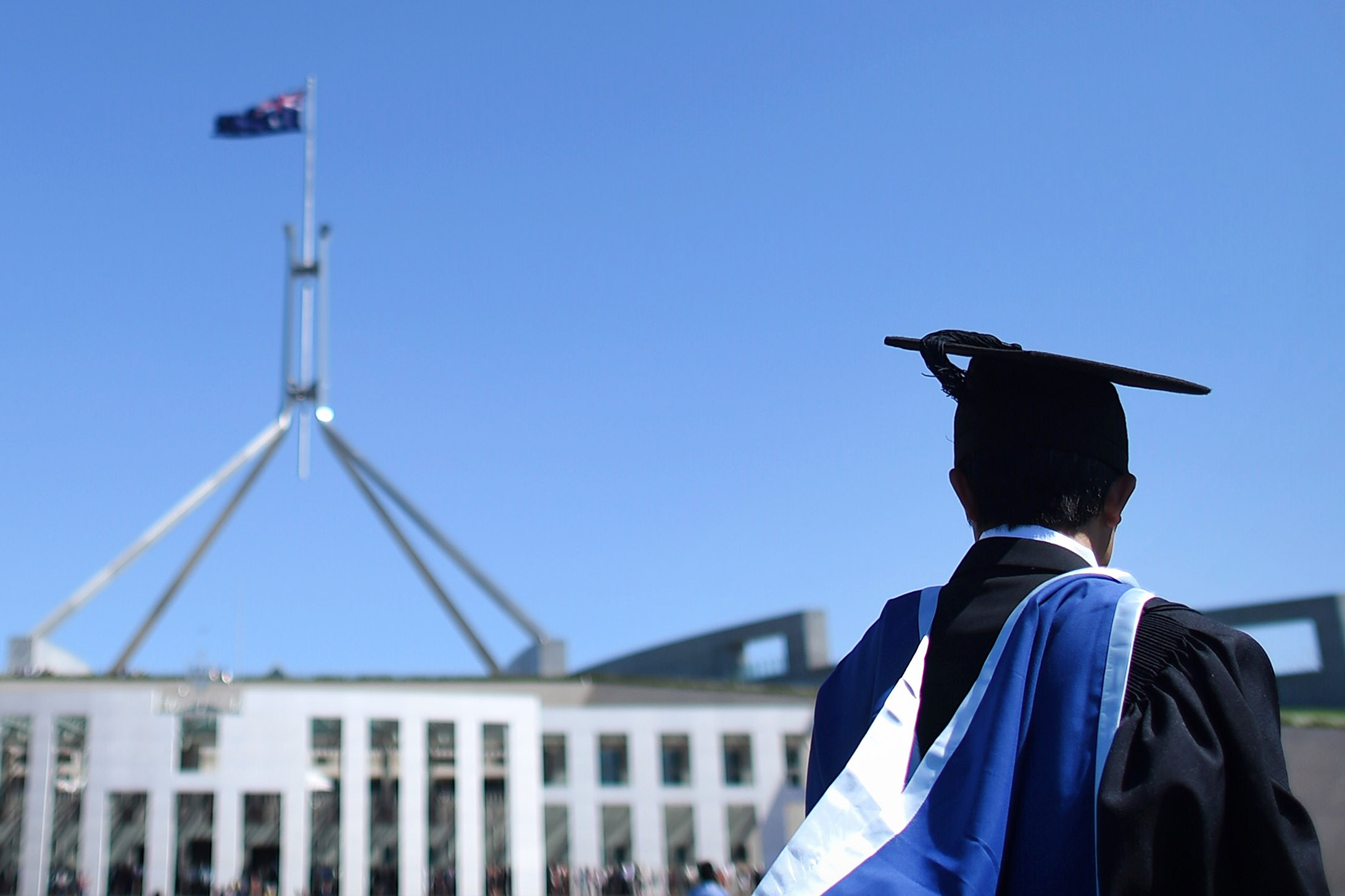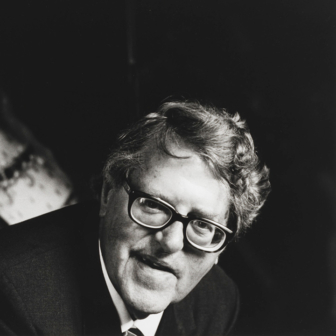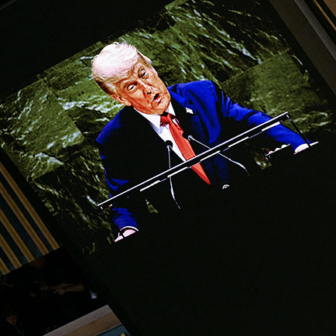When I took up a new academic position in July 2021, universities across Australia were still dealing with the collapse in international student numbers caused by the pandemic. Redundancies were widespread, not helped by the Morrison government’s decision to exclude public universities from JobKeeper. Within a few months of my arrival my university had launched “Deakin Reimagined” — a knife fight by any other name.
But the problems then and now run much deeper than the pandemic’s temporary effects. Having been shown to have systematically underpaid employees for at least most of the past decade, universities have been embroiled in years of scandal. The National Tertiary Education Union has won a series of major cases, even while university leaders, whose levels of pay are scandals of their own, have refused to acknowledge the wage theft committed on their watches was a result of their policies and practices. The amount to be reimbursed to underpaid staff is estimated to be almost $400 million nationwide.
Meanwhile the Job-Ready Graduates scheme, hastily implemented by the last government, has had seemingly perverse yet nonetheless intended effects. The interim report of the Universities Accord, a Labor-appointed expert panel, suggested that the scheme needed fixing “before it causes long-term and entrenched damage to the Australian higher education system.” The final report found that its “intended purpose of influencing students’ choice of courses through price signals has failed.” What it has succeeded in doing is increasing costs for students and reducing funding for the STEM courses it was designed to boost.
Higher education, in other words, is not in a good state. As Graeme Turner describes it in Broken: Universities, Politics & the Public Good, “Students are dropping out, academics are burning out, and governments have been tuning out for decades.” The figures he cites tell their own tale of decline. Whereas in the 1980s the federal government contributed “something like 80 per cent of the sector’s funding,” the figure is “now closer to 40 per cent.” Meanwhile, “the system has more than trebled in size” from almost 500,000 students in 1990 to 1.5 million in 2022.
To make up for the shortfalls, domestic students increasingly take on large HECS loans and accept full-fee arrangements. International students, whose fees are uncapped, have helped to pay for what the government has not. As Turner concludes, “international student fees were largely responsible for bailing out the sector” in the first decades of the twenty-first century.
Higher education in Australia is also bloated and undifferentiated. For a start, Australia’s universities are vast in size. A country with a population of twenty-seven million has thirty-seven public universities, of which thirty-two enrol more than 20,000 students (soon to be thirty-one with the merger of UniSA and the University of Adelaide). Monash enrols more than 80,000 and Melbourne and Sydney more than 70,000 each. By contrast, Oxford University has an enrolment of 26,000 and the University of Pennsylvania 25,000.
The size of Australia’s institutions would not be such an issue if the universities were more federated, with power devolved locally to offer different styles of education across disciplines and campuses. But centralisation has been the rule of recent times, generally in the name of efficiency and standardisation.
Those in whom power is vested have also tended to be feckless and lacking in vision. We often hear that high pay is required to keep talent in the system; in practice, that means hundreds of university managers are paid more than state premiers. It is these managers who have been responsible for one of the largest employment scandals to hit any Australian industry in the last few decades. The consultations for the Universities Accord also “heard repeatedly about failures to ensure students are safe, particularly from sexual assault and sexual harassment.”
As a university employee I receive the sunny missives from the central university. These have included regular denials about wage theft — denials continued long after other institutions had already acknowledged underpayment. When my university eventually conceded in May 2024, the vice-chancellor apologised but did not take responsibility.
As Turner points out, even as the system has expanded since the reforms introduced by Labor education minister John Dawkins in the late 1980s, it has become less diverse. At the time of the reforms, some institutions prioritised vocational programs while others focused more on traditional academic disciplines. The newer institutions were often interested in “innovative and interdisciplinary ways of designing their teaching programs and directing research,” as Turner puts it. Colleges of Advanced Education offered alternative pathways for students and were more “focused in their mission.” After the reforms, though, CAEs were effectively strongarmed into becoming universities. Federal planning declined in this new market-driven system; tertiary education, in turn, became more concentrated.
Universities today, Turner argues, return far less to the public, students, and staff than they should. On the first of these points, the market has little interest in prioritising research and teaching of national significance. Turner describes the decline of the study of Indonesian and other languages. “Many universities have cancelled their language courses, arguably because they are not generating enough demand to make them viable. While such a decision might be in the commercial interest of the institution, it is not in the interest of the nation as a whole.” Australia has constantly been caught short by its failure to maintain research capacity, whether in important geopolitical areas or in managing the impacts of technological change.
Students too are poorly served by a one-size-fits-all model. “Drop-out rates are at an historic peak (over 25 per cent and rising),” Turner writes, leaving around a quarter of students with debt but nothing to show for it. I know from my own classrooms that the government’s failure to fund students adequately through higher education means young people are undertaking significant amounts of paid work alongside their study, to the clear detriment of their learning. The diverse needs of students are also not well met. Governments periodically say that they want to revive regional education, but numerous policy decisions, in particular the uncapping of student numbers in 2012, continue to ensure the concentration of similar kinds of institutions in the state capitals — institutions that then put few resources into teaching the students who are watching along on Zoom.
The rise of generative AI has exposed major problems with the teaching model in Australian universities. Academics teach large cohorts of students with whom they have limited contact. The use of AI is widespread among students, as I know from my own experience, ranging from more legitimate uses (including specialist grammar and style tools) to less legitimate ones (whole paragraphs or even essays). The idea of offering more personalised education is seen as unrealistic — a level of cynicism that threatens the foundation of our pedagogy.
Staff are doing little better. As Turner shows with a depressing array of statistics, workloads have intensified and conditions deteriorated. In the Society and Culture field “the number of students nationally increased by 80 per cent” between 2001 and 2020 “while the number of full-time academic staff to teach them increased by 8 per cent.” Half the teaching at Australian universities is delivered by casual and short-term staff.
Little surprise, then, that surveys suggest around half the academic staff in this country are considering leaving the profession. A more empowered workforce could make its own decisions and develop new visions for education in each discipline, but that is not the world we currently live in.
Alongside all this is a culture of insistent infantilisation, with every curriculum change or innovation forced to go through many layers of management. These processes are ostensibly required to ensure successful delivery across multiple campuses, cohorts, modes of delivery and so on. But, to paraphrase David Graeber, at some point we have to wonder if the immiseration is the point. We are kept busy with bullshit precisely so that the value of our otherwise meaningful jobs ebbs away. Sometimes I yearn to see the whites of my students’ eyes as they encounter something new, beautiful, moving or insightful. Then I get back to filling out forms.
Turner’s slim volume offers some thoughts about what a better future for our universities might look like. He is unabashed in his belief that concepts of the public good should be returned to the heart of university policy. “They are worth funding in their own right, and in the national interest,” he writes, “just like hospitals, say, or public schools.”
While restoring the government funding lost to the system over the last several decades is no doubt vital, Turner sees a wider cultural and ideological battle to be won. Otherwise “the state of the nation” will continue to be understood as “the state of the economy” and the “national interest and the public good… reduced to the interests and commercial values of business and the resources sector.”
These refrains will be familiar to readers of The Shrinking Nation, Turner’s 2023 state-of-the-nation book, which was written in the wake of the pandemic. There, he dedicates a chapter to the retreat of the concept of the public good in Australian life, a retreat he blames on the rise of free-market orthodoxy. In a neoliberal political environment, those institutions most engaged with serving the public good have faced the greatest challenges. They have been “characterised by successive governments as peripheral to, or even enemies of, the national interest.”
In this latest book Turner makes some proposals for how to deal with the problems in universities, a number of which would not require significant extra funding. “This is a wasteful and badly designed system,” he writes, and current funding could in many areas be put to better use. To eradicate needless duplication and to reduce uniformity, he suggests “an overarching structural and strategic plan.” Alongside this, an “independent coordinating body” could “manage how our university system serves our national interests.”
It is extraordinary that these ideas have to be voiced, but Australia’s market-driven approach means there is little meaningful coordination between universities. To get better outcomes, the government could try working with everyone who has a stake in the system, as well as actually planning for what it wants universities to do.
Beyond these ideas, Turner identifies a few areas of especially low performance that could reformed with little pain. The Australian Research Council, which oversees numerous funding programs with success rates below 20 per cent, sets minimum budgets for projects. This has the effect of increasing the cost of the research undertaken in some disciplines, to little perceivable benefit. Turner proposes reviving block funding — grants of research funds to each university — which would then be used to distribute a “relatively modest allocation of start-up funds” to any researcher employed at a junior level “who could make a case for it within their school or department.”
Small investments like these would have made the world of difference to me at an earlier career stage. They would also have stopped the inflation of the budgets of humanities projects to $400,000 and beyond. As they are currently designed, the ARC’s programs are not returning value for money across the system, as any full economic costing that takes account of time spent on unsuccessful grant applications would show.
Turner makes clear that the relationship between universities and staff needs to be fundamentally transformed. As he suggests, casualisation and fixed-term teaching-focused positions should be the subject of caps and targets. Through the “Closing the Loopholes” legislation, the federal government has already barred universities from using casual employment to teach in any ongoing way (much to the chagrin of university administrators). With neither governance nor resourcing changed, however, the result has been an internalisation of the problems of the previous model, leaving a small cohort of junior staff on fixed-term contracts with enormous teaching loads.
Turner’s ideas are laudable, and they could well make a difference if they were implemented. But there is a central tension in his suggestions, namely that one side of politics would happily destroy the university system as we know it. The Job-Ready Graduates package should not be understood as serious policy: it was intended to cause chaos and to punish political opponents. A Liberal minister vetoed ARC grants because they included terms such as “climate change” or because they were about old things overseas. The limits on international student visas, to which both Labor and the Coalition have committed in various ways, are causing widespread damage. A coordinating body would be well and good, but in this environment I am not sure political leaders across the spectrum are committed to sustaining higher education in Australia.
It seems more likely that we will continue to work in an environment where students are shortchanged, academics treated like children, university leaders dramatically overpaid, and the public gets less back than it should from its already dwindling investment. While it is in everyone’s interest to have a functional system for post-secondary education, I don’t see much evidence that change is happening for the better. Soon enough, the next Coalition government will make things worse than they are now, and we will look back to today as an easier time.
Most discussion of universities in Australia comprises interminable culture wars about who protested what, what an academic said, and what should and should not be taught. The truth is that my students are struggling just to get by; the university has little interest in ensuring they have learnt something; and most academics, with their positions constantly under threat, are just happy to have work at all. Curriculum debates have receded behind funding worries, whatever the Australian might believe. I was surprised to learn about the encampments across Australian universities protesting the war in Gaza, not because I thought that students were apathetic, but because our campuses have been dramatically emptied.
When I returned to Australia from an extended research trip last year, I experienced what could be called a professional crisis. It was not that anything in particular was wrong, it was more that I struggled to marshal the enthusiasm that I have long had for the job. I was working through a heavy teaching load to make up for the time away. Alongside many others in my faculty, I had been denied a sabbatical — and with funded places so limited and many staff having already waited much longer than me, I couldn’t see leave on the horizon. My application for an Australian Research Council grant was rejected, which was not a surprise but was disappointing.
What was wrong? At least part of the story is the change in the nature of education. When I did manage to get into the classroom I enjoyed the seminars, but I felt drained by much else. There were rumblings yet again of redundancies. AI was everywhere and it felt like little was being done to tackle the problem; in my darkest moments I wondered if I was going to spend my life grading ChatGPT’s work. It all felt so far from what I loved as an undergraduate, an education that had once opened up a world of political explanation and aesthetic possibility. I thought about asking for a period of unpaid leave.
Increasing numbers of my colleagues in Australia have left the job and are not coming back. Sometimes this is by choice, sometimes not. As Turner writes, “It may be through neglect rather than design, but we are rapidly burning through our next generation of university teachers and researchers.”
I wince with recognition when Turner develops a portrait of a fictional lecturer, “Stephen,” who is “finding it harder to enjoy his teaching.” He struggles both with the depressing reality of grading AI-written essays and with classrooms emptied by online offerings. In Turner’s handling, “Stephen” ultimately decides to make a move to a “prestigious research institute in Europe.”
Late last year I applied for a lectureship at University College London. I was fortunate enough to be offered the job, which I accepted. I will be joining the faculty there in September. •
Broken: Universities, Politics & the Public Good
By Graeme Turner | Monash University Publishing | $19.95 | 96 pages




